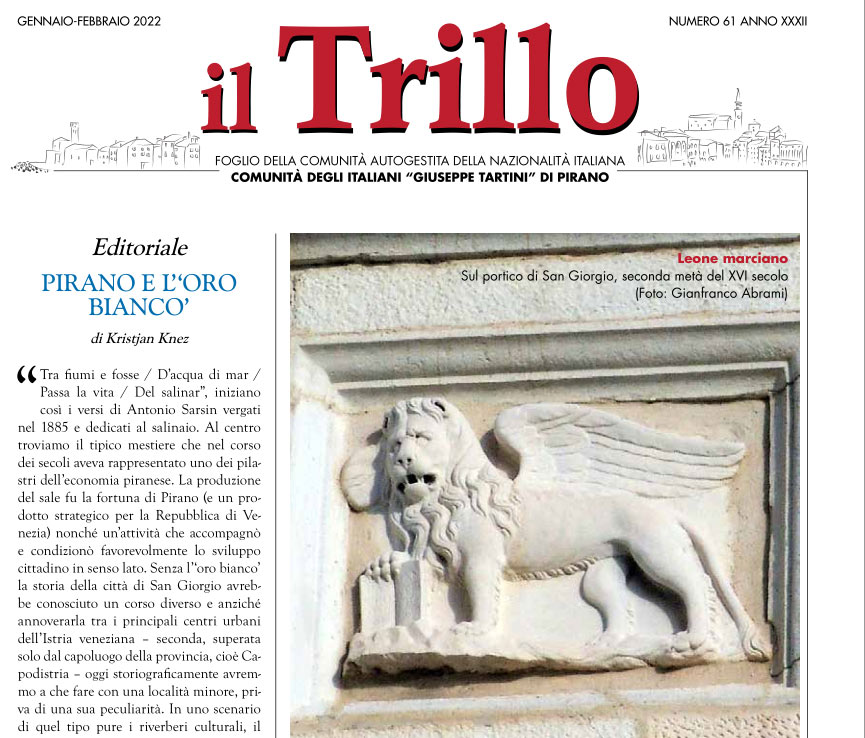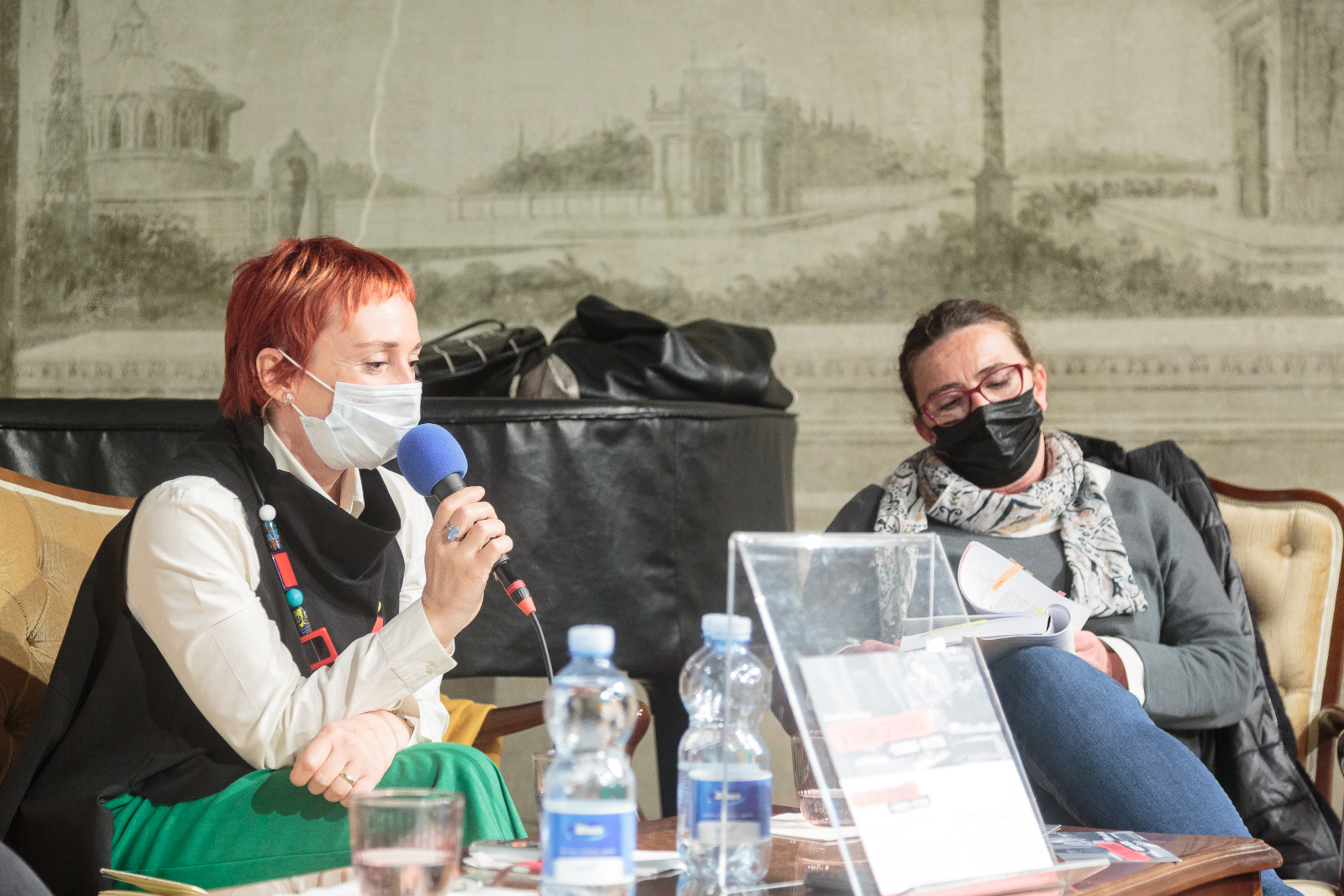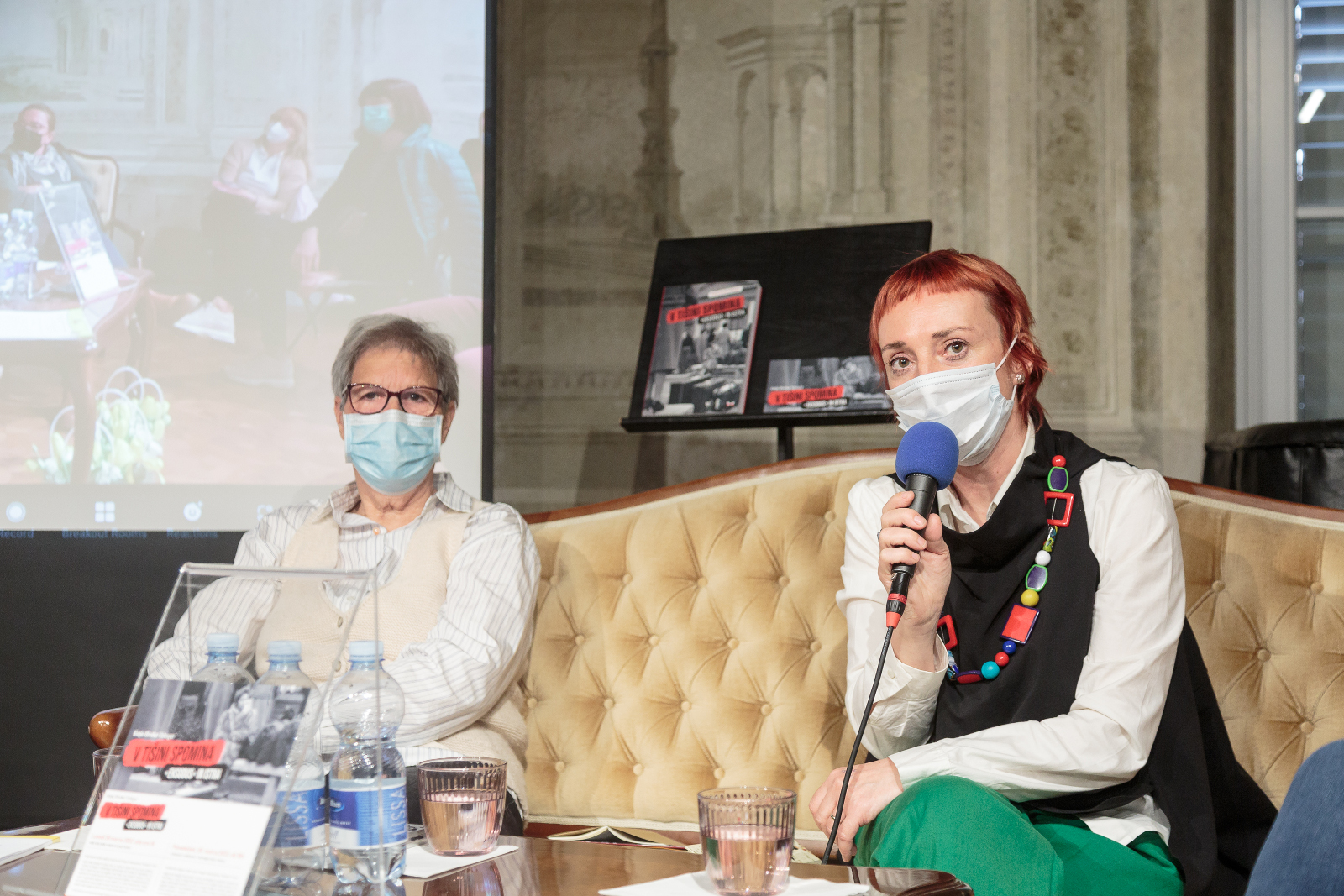Ko spregovori tišina

Slavnostni koncert Godalnega orkestra dijakov Glasbenega ateljeja Tartini
04/02/2022
il Trillo n. 61
04/04/2022
V ponedeljek, 28. marca 2022, so v dvorani vedut v Tartinijevi hiši gostili predstavitev knjige dr. Katje Hrobat Virloget, ki je izšla leta 2021. Knjiga v slovenskem jeziku z naslovom V TIŠINI SPOMINA “EKSODUS” je v Istri doživela izjemen uspeh, zato je lani poleti dosegla svojo tretjo izdajo. Knjiga bo prevedena tudi v italijanščino.
Dogodek, ki ga je bilo moč spremljati tudi virtualno, sta vodili Daniela Paliaga in Manuela Rojec, predsednica Skupnosti Italijanov Giuseppe Tartini Piran. Slednja je v kratkem nagovoru pojasnila, da nas čaka večer, namenjen izmenjavi idej, mnenj in stališč; tako je moderatorka povabila številno občinstvo k aktivnemu sodelovanju pri predstavitvi. Zbrane je nagovoril tudi predsednik SSIN Andrea Bartole. Kot pove že sam naslov, knjiga obravnava eksodus, le da je bil tokrat za njegovo analizo uporabljen znanstven pristop, ki zaobide tako predsodke in stereotipe kot kazanje s prstom na krivce.
Moderatorki sta večer začeli s predstavitvijo avtorice Katje Hrobat Virloget. etnologinje in antropologinje na Univerzi na Primorskem ter dobitnice številnih nagrad in priznanj, med njimi tudi Bartolove. Dolga leta se je posvetila raziskavi zelo posebne plati lokalne zgodovine, ki se je je lotila z inovativnim pristopom in brez obsojanj. Knjiga govori o eksodusu, a predstavlja raziskavo, ki prinaša novost; predvsem pa je izjemna že zato, ker avtorica ni pripadnica italijanske narodne skupnosti, kar je vsekakor vzbudilo veliko začudenje.
Raziskava o eksodusu je trajala deset let, zaznamovali pa sta jo kritični pristop in življenjske zgodbe okrog šestdeset ljudi, čeprav je uradno število intervjuvanih veliko večje. Večino zgodb so prispevali tisti, ki so se v Primorje priselili z ozemlja nekdanje Jugoslavije in iz notranjosti Slovenije. V knjigi spoznamo, s kakšnimi izzivi so se morali soočiti, ko so se naselili na to obmejno območje, ter kako so doživljali proces integracije.
Avtorica je v knjigo vključila pomemben del zgodovine in življenjske zgodbe pripadnikov italijanske narodne skupnosti, ki so morali tako rekoč čez noč zapustiti svoje domove, družine, življenja. Te zgodbe so imele zelo različne zaključke, saj so se nekateri odločili za vrnitev, drugi pa so si novo življenje ustvarili drugje. V knjigi najdemo tudi spomine in čustva, ki jih še danes doživlja druga ali tretja generacija ezulov. Ta obsežen esej pripoveduje zgodbo o številnih selitvah, ki so tragično zaznamovale našo regijo. Zbrana pričevanja so zelo intimna in so pravi odraz zgodovinsko-političnih sprememb, ki so zaznamovale dvajseto stoletje ne le Istre, temveč celotne Evrope.
Med predstavitvijo je avtorica izpostavila težave, na katere je naletela med raziskavo, saj so mnogi zavrnili pogovor o tej temi, rekoč, da ‘nima smisla’. Mnogi sogovorniki, predvsem pripadniki italijanske narodne skupnosti, niso želeli govoriti o svoji zgodbi, najbrž zaradi strahu ali nezaupanja. Tako se je antropologinja odločila pisati o njihovem molku, ki včasih pove veliko več kot besede.
S spremenjeno perspektivo je v središče postavila bolečino, ki ti ne pusti spregovoriti, in skušala razumeti vzroke za njihov molk, zaradi katerega se umikajo vase in postanejo nevidni za večinsko prebivalstvo. Knjiga želi poudariti pomen empatije in veščine prisluhniti. Kajti le s pogovorom o teh dogodkih je mogoče narediti korak naprej, razbiti stereotipe in končno postaviti temelje za mirno sobivanje.
Anna Maria Grego
Foto: Nataša Fajon











